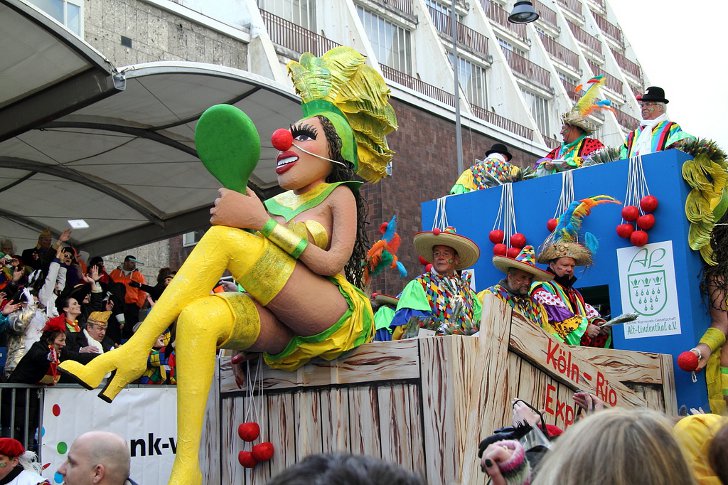The Carnival season in Germany is often referred to as “the fifth season”. It officially begins on November 11 at 11:11 am. There are no carnival festivities during the Advent and Christmas period, the carnival spirit begins to gain momentum after January 6 (the feast of Epiphany, also known as Three King’s Day).
The Cologne Carnival is officially declared open a week before Lent. The opening ceremony is held on the Thursday before Ash Wednesday (the first day of Lent), it takes place at 11:11 am at the Old Marketplace (Alter Markt) in the heart of the old city of Cologne. It features the Mayor of Cologne and three traditional characters who serve as the official regents during the Carnival. They are Jungfrau (the Virgin, or Her Loveliness), Prinz (the Prince, or His Madness) and Bauer (the Farmer, or His Heftiness).
The first day of the Cologne Carnival belongs to women, it is known as Weiberfastnacht (Women’s Carnival). One of the most unusual customs of the day is necktie-cutting that is a symbolic way of putting men in their place. Men who are aware of the custom usually wear their old neckties that they don’t mind being cut in half.
Carnival Friday is filled with parties, performances and other events that last until late at night. On Saturday evening, the so-called ghost parade takes place, marching along changing routs through the city. This is a relatively new tradition that was introduced in 1991. In addition, there are several masquerade balls held at different venues.
Carnival Sunday features a morning children’s parade through the city center. The festivities culminate on Rose Monday (Rosenmontag). The highlight of the day is the official parade that has been organized by the Festival Committee of the Cologne Carnival since 1823. The parade features over 10,000 participants, more than 120 floats and about 100 bands. It attracts over a million spectators from all over Germany and abroad. On this day, most businesses in Cologne are closed. Smaller parades and parties are held in many neighborhoods.
The festivities continue on Carnival Tuesday. Various parties and parades take place in the suburbs of Cologne. In the evening, the ceremony known as Nubbelverbrennung (the burning of Nubbel) takes place. Nubbel is a straw effigy that symbolizes numerous “sins” committed during the Carnival.
Ash Wednesday is the final day of the Cologne Carnival. It is the first day of the Lent, so fish dinners are traditionally served at local restaurants and pubs. Catholics attend Holy Mass and have crosses of ashes drawn on their foreheads.

Photo: Rafal Jalocha




